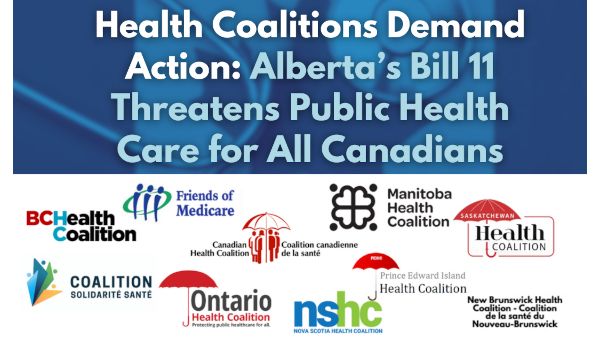Nurse-Patient Ratios: Saving Lives and Rebuilding Nurses’ Morale
“I have anxiety and feelings of guilt that I should have done more, but I can’t. I can only do so much.”
A new academic study is proposing a bold new solution for Ontario’s hospital crisis – life-saving nurse-to-patient ratios. The authors of the study extensively researched the inadequate nurse staffing levels in Ontario, contrasting them with mandated nursing ratios in places like California and Queensland (Australia).
The study found that nurse-to-patient ratios make a positive difference for patients and staff, while saving costs and improving the state of the healthcare system.
Staffing Ratios Improve Patient Care
There is clear evidence showing that poor staffing levels have a negative impact on patients: for example, every additional patient added to a nurse’s workload is associated with a 7% increase in patient deaths.
Unfortunately, in Ontario’s hospitals, nurses are routinely assigned too many patients due to understaffing, which compromises the quality of care.
On the other hand, research shows death rates have declined in jurisdictions with higher nurse staffing levels such as in California where nurse-to-patient ratios came into effect in 2004. In other words, staffing ratios save lives.
Since ratios allow nurses to spend more time with patients and provide optimum care, they are generally associated with better patient care including lower levels of medical errors, decreased risk of infections, and lower readmission rates.
- A 2011 UK study found that patients in hospitals with the worst staffing ratios had 26% higher death rates.
- A 2011 study surveying nurses in four US States found that nurses in poorly staffed hospitals were 6% more likely to report that important information about patients “fell through the cracks” when transferring patients across units.

“The public needs to know that without better working conditions and more nurses, the system is never going to recover.” – Oncology nurse
Staffing Ratios Improve Staff Well-being
The staffing crisis in Ontario’s hospitals is a direct result of chronic underfunding and understaffing. The ever-intensifying workloads are physically, mentally, and emotionally draining, as evidenced by high rates of physical injuries, depression, and burnout. In other words, low staffing levels are unsafe for workers, as well as patients.
Unsurprisingly, these conditions have caused an exodus of workers, resulting in hospital vacancies in Ontario skyrocketing 331% since 2015! The inability to retain and attract staff is a major problem for hospitals today, the consequences of which can be seen most glaringly in the form of emergency room closures.
Conversely, nurse-to-patient ratios improve staff satisfaction, reduce burnout, and greatly aid with recruitment and retention. For example, after the establishment of nurse-to-patient ratios in the Australian province of Victoria, the number of nurses increased by 24%, with more than 7,000 inactive nurses rejoining the workforce.
This means that it is entirely possible to address the nurse staffing shortage in Ontario by enforcing a staffing standard and improving working conditions.
- Overexertion injuries increased by 19% in Ontario’s hospitals between 2020 and 2022. In contrast, injury rates reduced by 38% in California after nurse-to-patient ratios were implemented.
- A 2025 study found that every additional patient per nurse was associated with a 4% increase in work-related physical injuries.
- Nurse staffing vacancies in Ontario are the worst in the country. Between 2022 and 2024, nurse job postings increased by 43%.
“There’s no time in the day to do the amount of work that we’re doing. It’s become so unsafe; it’s become so unrealistic. It’s an absolute disgrace to our profession.” – Operating room nurse
Staffing Ratios Save Healthcare Costs
Ontario’s hospitals receive the lowest per-person funding in Canada. Naturally, they also have the fewest staffed-beds across the country. This is often referred to as an ‘efficient’ way of delivering care, even as it creates long wait-times, overcrowded hospitals, and reduced quality of care for patients, as well as high rates of injuries and burnout for staff.

Inadequate government spending comes not only at a high cost to the people impacted by the system, but it also leads to wasteful expenditure in the form of high patient readmission rates, increasing workplace absenteeism, and the ballooning costs of private agency staff.
Research from hospitals in Pennsylvania shows that hospitals that reduced staff burnout by 30% had 6,200 fewer infections for annual cost-savings of up to $68-million.
By mandating nurse-to-patient ratios, Ontario can create safer workplaces and save money at the same time. The evidence is clear about the need for staffing ratios: the only challenge is political will. •
This research was undertaken by James T. Brophy, PhD and Margaret M. Keith, PhD on behalf of the Ontario Council of Hospital Unions-Canadian Union of Public Employees (OCHU-CUPE). The data upon which the findings are based include published research and interviews with Ontario nurses. The full report is available from OCHU-CUPE at ochu.on.ca.





